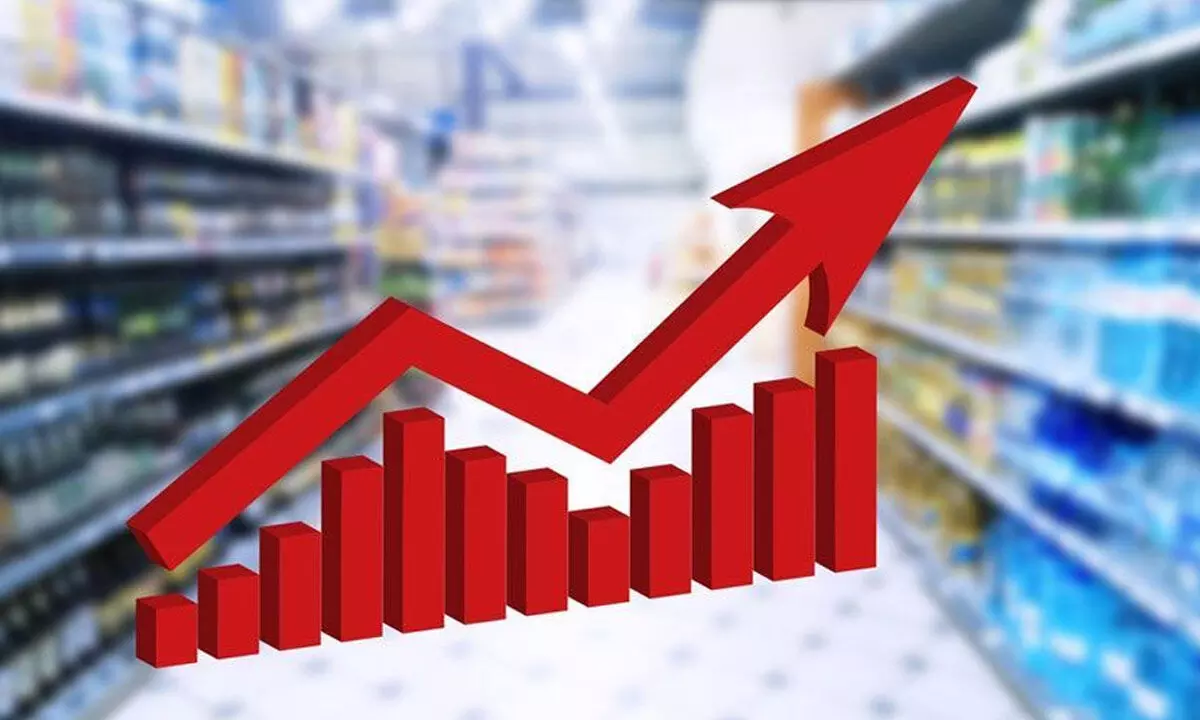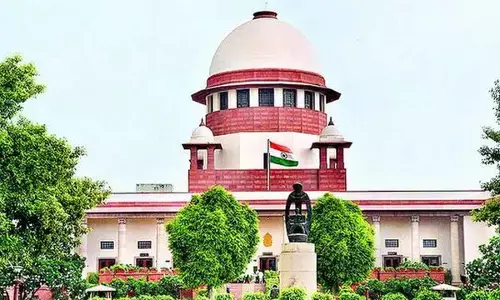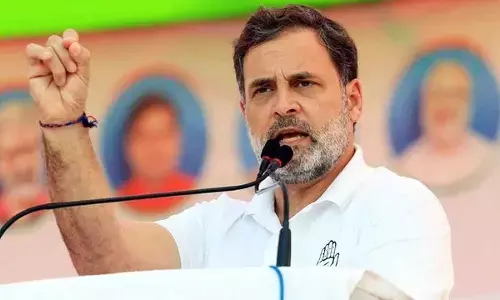Repo hike if inflation doesn’t ease

After estimating that the Q 2 headline inflation would be at 6.2 per cent, the Reserve Bank of India has forecast that with a potential increase in prices of cereals and pulses, there would be every possibility of a substantial increase in headline inflation in the near future.
After estimating that the Q 2 headline inflation would be at 6.2 per cent, the Reserve Bank of India has forecast that with a potential increase in prices of cereals and pulses, there would be every possibility of a substantial increase in headline inflation in the near future.
Against this background, the latest India’s headline inflation as per the Ministry of Statistics and Programme Implementation, India’s headline inflation rose to 7.44 per cent in July, much beyond the estimation of Q2 FY24 outlook of 6.2 per cent due to the steep increase in prices of vegetables, particularly tomatoes, over the past month. The consumer price index (CPI - general) for rural was at 7.63% while for urban it was 7.22 per cent as against 4.78 per cent and 4.96 per cent, respectively in June.
In comparison, for the corresponding period July 2022, the CPI (general) was 6.8 per cent for rural and 6.49 per cent for urban with the combined figure of 6.71 per cent. Consumer Food Price Index with a weight of 47.25 rose from 179.2 in June to 190.1 in July in rural and urban with weight of 29.62 rose from 186.4 to 200.6 from June to July and combined 39.06 weights from 181.7 to 193.8.
According to the Union Labour Ministry, the point to point rate of inflation based on CPI- agriculture labourers and CPI- rural labourers, stood at 7.43% and 7.26% in July compared to 6.31% and 6.16 respectively in June and 6.60% & 6.82% respectively during the corresponding month of the previous year. Food inflation stood at 8.88% and 8.63% in July compared to 7.03% and 6.70% respectively in June and 5.38% and 5.44%, respectively during the corresponding month of the previous year. This was largely due to the food group to the extent of 18.23 and 18.28 points because of increase in prices of rice, wheat atta, pulses , milk, fish- fresh/dry, gur, chillies- green/ dry, turmeric, garlic, ginger, onion, mixed spices, brinjal, tomato and gourd.
RBI Governor in his statement has said, “We have to stand in readiness to go beyond keeping Arjun’s eye to deploying policy instruments if necessary.” The government has realised that the current food prices can be tamed by taking steps from the supply side, which it has initiated with regard to wheat and rice and putting restrictions on exports of rice and sugar while allowing import of pulses and oilseeds,
According to Aditi Nayar, Chief Economist, Head, Research & Outreach, ICRA “the data for food prices for early August is not very promising and we expect the headline CPI inflation to print above the 6.5% mark before cooling off materially in September.”
According to Crisil, “the higher than expected inflation reading and continued food price pressure, despite a softening core, put monetary policy in dilemma.” RBI states that “the uptick in inflation in its June reading mutated in July, with the unprecedented shock to tomato prices spilling over to prices of other vegetables. While core inflation witnessed a moderation, headline inflation is expected to average well above six per cent in the second quarter” If the headline inflation remains above the highest tolerance band of six per cent in spite of various measures taken by the RBI and the government, there is a possibility that in its next Monetary Policy Committee meeting, RBI may hike the Repo Rate by another 25 basis points.
The RBI Governor has indicated “we have a choice to modify our inflation projections in every meeting of MPC, if warranted, in the interest of better guidance; or avoid frequent changes and revise them only on fewer occasions for simplicity of presentation.”
With regard to the economy’s vulnerability to recurring incidences of vegetable price shocks, especially ahead of and during monsoon, the bank said that this needs to be mitigated by major reforms in perishable supply chains. It says this could impact headline inflation. Due to RBI’s policy of “restraint demand” through monetary policy actions and the government’s proactive measures of easing supply shocks, are helping to ease price pressures.
Except for the prevailing high CPI inflation, India has done well in all major macro- economic aspects, with fiscal deficit and government borrowing under control, major focus on capex both at the central and state government, huge forex reserves, manageable current account position, a fair growth in government revenue sources both direct and indirect taxes. India’s exports and imports have moderated recently, which needs to be bolstered for major contribution to GDP.
According to RBI Governor Shaktikanta Das, “India is uniquely placed to benefit from the outgoing transformational shifts in global economy in the wake of geopolitical realignments and technological innovations. A large economy marching ahead with vast domestic demand, and untapped resources and demographic advantages, India can become the new growth engine for the world.”
However CPI Inflation both due to domestic reasons and import inflation badly affects the common man at the middle income and lower income level. The food related price rise and energy price rise finally gets passed on to all other items and affects private consumption.
However the fight against inflation is not yet over and regulators are continuously taking action to tame inflation.
Moreover, climate risks have started to surface on higher basis with the global economy boiling, higher physical and financial risk due to climate change. These challenges are also delaying realising the Sustainable Development goals.
Although, India is in a much better position in these areas of challenges, we have a long way to in coming out successful.




















